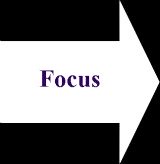Home Page | Blog | Managing | Marketing | Planning | Strategy | Sales | Service | Networking | Voice Marketing Inc.
Business Operations:
Define Operations Management in Your Plan
Your business operations need to be detailed in your operating plan; it's the core function of your organization. When writing a business plan, define operations management tools and strategies, as well as your target operating profit margin.
Business growth and operations objectives depend on accurate, up-to-date information in your plan.
Search This Site

Business Operations and the relationship to your business plan: your operations include the physical location, facilities, equipment, inventory, warehousing, management information systems, people - everything that is required to operate your business.
Understanding and effectively managing the operations side of your organization is key to running a successful business.
Ensure that you include your business operations strategies in the business plan outline.
Your strategies might include a lean approach to your operations, or a focus on continuous improvement, or on investing in high technology equipment.
Define Operations Management
By detailing what is required from your operations to achieve your overall business objectives, you will keep the business focused on the day to day events that are necessary to keep the business going.
That includes equipment and facilities management and cost; maintenance management and cost; labor force (number of people required for the production and sales goals); the budgets for each of the operations line items; and the planned operating profit margin for each product.
Your operating function is the core of your business and it's extremely important to manage it effectively, while integrating the other business functions into your planning.
16 Operations Management Tools and Techniques:
Indicate operating hours (shifts, open for customers, days of week open, etc.). Indicate the address of your location(s).
Describe how your product is made or how your service is provided.
- Detail your day-to-day operation, including all the products and/or services you provide, how you provide them and standard operating procedures for each process.
- Provide information on the average production time from quote or estimate (if applicable) to shipped order.
- Detail any seasonality (e.g. Christmas season) that requires peak staff, peak service, peak performance.
- Also detail your inventory requirements (for materials and finished goods) and how you keep track of your inventory (method; system).
Provide information on costs to produce (or service cost) by item and project those costs to align with sales plan projections.
Identify your labor force requirements (by department) - actual and projected based on sales projections. Also include training and development required to meet the operation's need. Include wages and benefits paid (and future employee compensation costs, e.g. wage increases, benefits increases, insurance increases), employee policies and practices for full time, part time and contract personnel. Part of the role of human resources is to provide this information to management; but some businesses do not have human resources support - that means the business owner must provide this information for planning purposes.
Identify your operations challenges to overcome and the costs associated with those challenges. For example, a steep growth curve over the next two years will require a larger physical footprint in the warehouse and additional warehousing equipment (forklifts, etc.) and staff) and will have an impact on your capital expenditures plan, on the operating profit margin, and on your financial ratios.
Identify the industry standards and regulations and how you meet them (e.g. safety, environmental, competition, etc.).
Identify your suppliers, what they supply, their pricing today and what you expect their pricing to be for the life of the plan.
- Include how these suppliers rank in terms of volume and importance to you.
- Identify any supplier that is critical to your business (i.e. only they can supply what you need) - if that is the case, make sure you put together a plan for alternative or substitute materials or supplies.
- Identify the terms and conditions and annual invoice amounts.
Identify your quality standards, how you are doing against those standards and if you plan any changes to your standards. Some associations can provide industry quality standards for comparison (e.g. the type of association that might have this information are industry or trade associations).
Use your safety checklist to identify what safety standards you want to measure, how are you doing against those standards and if you plan any changes.
If applicable, identify your environmental standards and how you are doing against those standards. Also indicate if you foresee changes in the near (next 5 years) future.
Identify any operational risks: for example - changing environmental standards; a key piece of equipment nearing the end of its useful life; etc.
Identify the physical storefront or plant or location.
- The type of structure, the size, the location.
- If you have them, include the most recent building drawings or a schematic; property appraisal (if you own the building); lease agreements, including the details on any leasehold improvements (if you lease the space).
- Indicate also if the space you own or lease is used to capacity or if there is room for growth. If you feel you have adequate space now, project into the future (based on sales growth) and predict when and how much space you might need 5 or 10 years from now.
- Indicate how the location provides access to, and for, customers, suppliers and the marketplace.
Prepare a list of all equipment (including what it does), what it cost, what its worth today (market value), financing arrangements, and the remaining estimated useful life of the equipment.
Prepare a list of all other assets (you might want to include the equipment list in this list too - even though it's a duplication, it's easier to read if in the two sections). Include land, buildings, equipment, inventory (finished goods as well as materials or supplies and in-process inventory at the time of writing the plan), vehicles, and whatever else you have as assets. Include what you paid for the assets, the worth today, any legal descriptions and/or identifying numbers.
Identify any special requirements (emissions, power, ventilation) that the business operations requires and how you deal with it.
Ensure that you list all operations management tools that you plan to use (for example, Lean Manufacturing, 5S, Six Sigma, ISO, and more).
Your Business Operations and Workflow
Make sure during your planning process that you consider operation or production constraints. Where is the bottleneck in your operation? Understand what slows your process down; then manage those constraints. For example, if you have a workflow issue (too many 'touchpoints'), analyze the problem using DMAIC (define, measure, analyze, improve, control) and then streamline the process to enable increased efficiency - and less touchpoints.
Once you develop your business operations plan, and define operations management strategies, track the actual results to the projected forecast on a monthly and annual basis. See how your business operations are doing compared to your plan: and manage the differences (if any).
More-For-Small-Business Newsletter:
For more timely and regular monthly information on managing your
small business,
please subscribe here.
Additional Reading:
Return from Business Operations to Small Business Plan.
Human resource planning needs to be part of business continuity planning.
Ensure your Business Financial Plan includes a provision for emergencies.
Build your Business Continuity Resources and Business Continuity Plans.
Your Business Exit Strategy needs to include management succession planning.
Or return to More For Small Business Home Page.
Subscribe to
More Business Resources E-zine
Implement Your Plan: for Results

Once you've built your plan, you need to implement it.
Developing your strategy (in the plan) is the first, necessary, step. You need to know the direction you want to go, and you need the strategy and the plan to help you get there.
But once you've built the plan, you must execute it.
There is no value in building a plan that just gathers dust.
When building your business plan, make sure that you include an action plan for the strategies, techniques and tactics.
The actions need to include who's responsible for doing what; measurements for success (such as deadlines and timelines, targets and goals, costs, etc.); and why you need to take the action (in some cases, one action needs to be accomplished before subsequent ones can be launched).
As you work through the plan, make sure that you build reporting periods into the implementation: you need to know what's going on and why something is working, or not.
Make sure to communicate progress, or lack of it, throughout the organization. And re-visit the plan when and where necessary.
This Site
Focus on Your Plan

Plan for the future: lots of business owners want to get, or keep, moving forward. Planning seems to be more of a passive activity.
However, to ensure that your business goes in the right direction and that it optimizes all its opportunities, and manages its challenges, it is important to plan.
Balance your activities against the plan: make sure that you are investing your time, and money, on the elements of your business that will help you succeed.
Measure what works, and what doesn't work, and keep your focus: use your business plan as a map to guide you in the direction you want to go.







